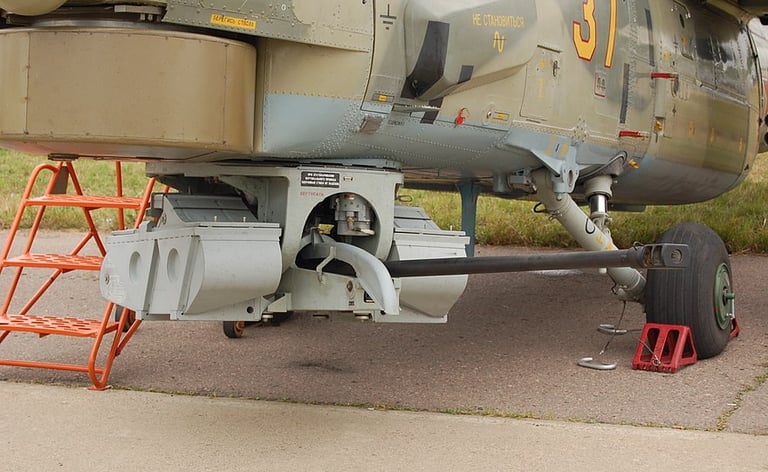Mi-28 Havoc
fact for 4/7/2021
FACTS
The Mi-28 (Western reporting name Havoc) is a Russian attack helicopter. The first of four prototypes made its maiden flight on 10 November 1982. The third and fourth prototypes were completed to Mi-28A standard with uprated engines exhausting via downward-inclined diffusers. The fourth production-standard prototype also had a moving, gyro-stabilized, undernose electro-optical sensor turret and wing-tip pods carrying electronic counter measures and chaff dispensers.


To meet a Russian Army requirement for a new attack helicopter the Mi-28 competed against a Ka-50. During the trials the Mi-28 was reportedly defeated by the Ka-50. However Mil received an order for a small batch of the Mi-28 helicopters, most likely in order to prevent the manufacturer from going bankrupt.
Currently a total of 24 improved Mi-28N attack helicopters are in service with the Russian Army. The type is being actively marketed for export customers. Some sources report that the Mi-28 is in service with Kenya. In 2013 Iraq ordered a first batch of 10 Mi-28NE helicopters. A total of 19 helicopters were scheduled to be delivered to Iraq until 2016. Algeria ordered 42 of Mi-28NE gunships.


The Mi-28 has a conventional helicopter gunship layout with the pilot in the rear and gunner in front. It is armed with a 30 mm trainable cannon housed in a turret under the nose. Twin 150-round ammunition boxes are co-mounted to traverse, elevate and depress together with the gun. So a total of 300 rounds of ammunition are carried for the main gun. The gun is identical to that of Russian BMP-3 infantry fighting vehicle and uses the same ammunition. Each ammunition box can be loaded with different types of ammunition. This gunship can also carry two pods with 80 mm unguided rockets and 16 anti-tank guided missiles.
For anti-armor missions the Mi-28 can be equipped with Ataka, Shturm-V or Vikhr anti-tank guided missiles. The Ataka missiles are radar guided have range of up to 8-10 km and penetrate 950 mm of steel armor behind Explosive Reactive Armor (ERA). The Shturm-V missiles have a range of up to 7 km and penetrate up to 800 mm of steel armor behind ERA. The Vikhr laser-guided missiles have a range of up to 10 km and penetrate up to 1 000 mm or steel armor behind ERA. These missiles are capable of destroying most main battle tanks.


Crew compartment is well armored. It withstands hits from 12.7 mm armor-piercing rounds and 20 mm HE-FRAG rounds. It is claimed that this helicopter can not be defeated by a single short-range anti-aircraft missile.
The Mi-28's cockpit is compatible with night vision goggles; the pilot has a head-up display and one CRT on which TV imaging can be displayed. The primary sensor package comprises the optical sights and laser rangefinder in an undernose turret. The crew are protected by energy-absorbing seats and an emergency escape system allows the crew to escape safely by parachute. A hatch in the port side, to the rear of the wing, gives access to the avionics compartment and a space large enough to accommodate two or three passengers during a combat rescue.
Source - http://www.military-today.com/
